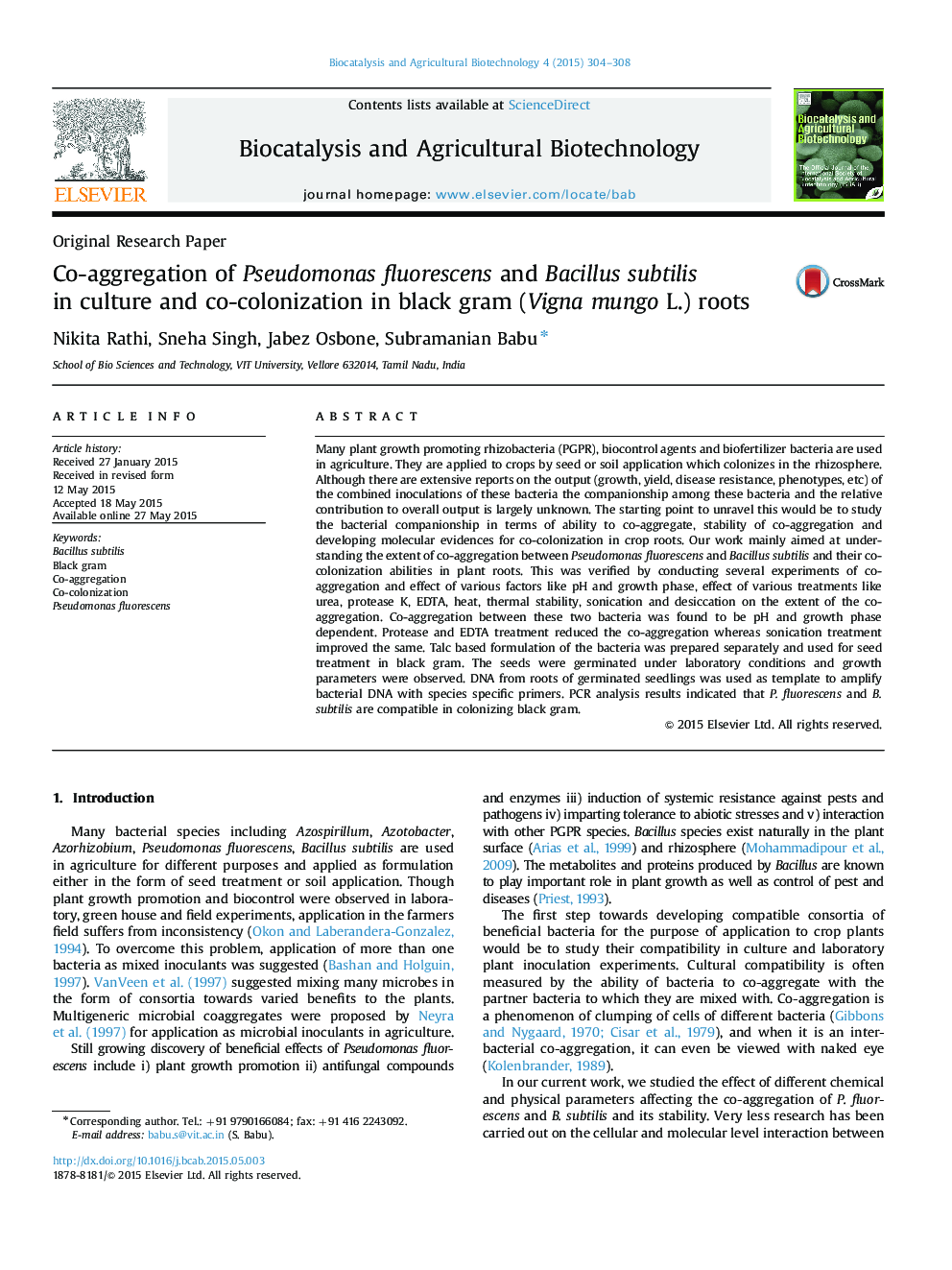| کد مقاله | کد نشریه | سال انتشار | مقاله انگلیسی | نسخه تمام متن |
|---|---|---|---|---|
| 2075454 | 1079335 | 2015 | 5 صفحه PDF | دانلود رایگان |

• First report on the co-aggregation of PGPR and biocontrol agent.
• Stability of co-aggregation and influencing factors are determined.
• Pseudomonas fluorescens and Bacillus subtilis co-colonize black gram plant roots.
Many plant growth promoting rhizobacteria (PGPR), biocontrol agents and biofertilizer bacteria are used in agriculture. They are applied to crops by seed or soil application which colonizes in the rhizosphere. Although there are extensive reports on the output (growth, yield, disease resistance, phenotypes, etc) of the combined inoculations of these bacteria the companionship among these bacteria and the relative contribution to overall output is largely unknown. The starting point to unravel this would be to study the bacterial companionship in terms of ability to co-aggregate, stability of co-aggregation and developing molecular evidences for co-colonization in crop roots. Our work mainly aimed at understanding the extent of co-aggregation between Pseudomonas fluorescens and Bacillus subtilis and their co-colonization abilities in plant roots. This was verified by conducting several experiments of co-aggregation and effect of various factors like pH and growth phase, effect of various treatments like urea, protease K, EDTA, heat, thermal stability, sonication and desiccation on the extent of the co-aggregation. Co-aggregation between these two bacteria was found to be pH and growth phase dependent. Protease and EDTA treatment reduced the co-aggregation whereas sonication treatment improved the same. Talc based formulation of the bacteria was prepared separately and used for seed treatment in black gram. The seeds were germinated under laboratory conditions and growth parameters were observed. DNA from roots of germinated seedlings was used as template to amplify bacterial DNA with species specific primers. PCR analysis results indicated that P. fluorescens and B. subtilis are compatible in colonizing black gram.
Journal: Biocatalysis and Agricultural Biotechnology - Volume 4, Issue 3, July 2015, Pages 304–308